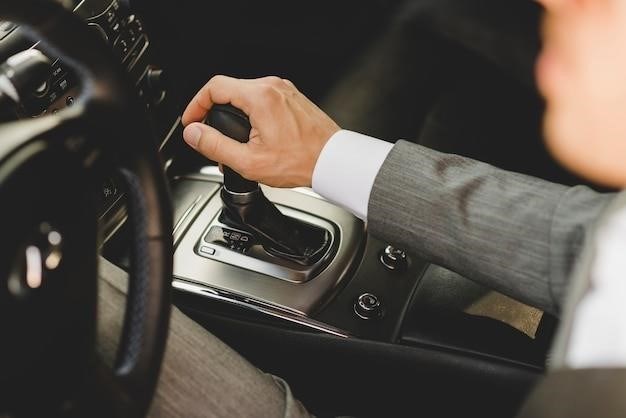Converting a Manual Transmission Vehicle to Automatic
Converting a manual transmission vehicle to an automatic transmission is a complex process that involves replacing the entire drivetrain. This conversion requires significant mechanical expertise and involves replacing the clutch, gearbox, and associated components with their automatic counterparts. While it offers the convenience of automatic gear shifting, the conversion can be expensive and requires careful planning and execution.
Introduction
The decision to convert a manual transmission vehicle to an automatic can be a compelling one, driven by a desire for increased convenience, particularly in stop-and-go traffic or during long drives. Automatic transmissions eliminate the need for manual gear shifting, offering a more relaxed driving experience. However, this conversion is not a simple swap. It requires a thorough understanding of the intricate mechanics of both manual and automatic transmissions, as well as the significant modifications needed to accommodate the change. This conversion involves replacing the entire drivetrain, including the clutch, gearbox, and associated components, with those designed for an automatic transmission. This process can be complex and expensive, necessitating careful consideration before embarking on such a transformation.
Understanding the Differences
The fundamental difference between a manual and an automatic transmission lies in the method of gear selection. In a manual transmission, the driver manually engages the gears using a clutch pedal and a shifter, while in an automatic transmission, the gear selection process is controlled by a complex hydraulic system. Manual transmissions use a clutch to disconnect the engine from the transmission during gear changes, allowing for smooth transitions. Automatic transmissions, on the other hand, utilize a torque converter, a fluid-filled coupling that acts as a clutch, allowing for seamless gear changes without requiring the driver to disengage the engine. This difference in design creates a distinct driving experience, with manual transmissions offering greater control and engagement, while automatic transmissions prioritize convenience and ease of operation. Understanding these fundamental differences is crucial when considering a conversion from manual to automatic, as it highlights the significant changes required to adapt the vehicle’s drivetrain to the new transmission system.
The Conversion Process
The conversion process from manual to automatic transmission is a complex and involved undertaking that requires significant mechanical expertise. It involves a complete overhaul of the vehicle’s drivetrain, replacing the manual transmission, clutch, and associated components with their automatic counterparts. The process typically begins with the removal of the existing manual transmission, clutch, and shifter. Next, the new automatic transmission, torque converter, and flexplate are installed. This step may require modifications to the engine mount, transmission mount, and driveshaft to accommodate the new transmission. Additional components, such as the automatic transmission control module, shifter, and wiring harness, are also installed. The conversion process often involves adjustments to the driveshaft and axles to ensure proper alignment and function. Finally, the vehicle undergoes thorough testing to ensure all components are functioning correctly before being returned to the owner.
Necessary Components
Converting a manual transmission vehicle to an automatic requires a comprehensive set of components to ensure a successful and functional conversion. The most crucial component is the automatic transmission itself, which should be compatible with the vehicle’s engine and drivetrain. A torque converter, which acts as a fluid coupling between the engine and transmission, is also essential. Additionally, a flexplate, which connects the torque converter to the engine’s crankshaft, is necessary. The automatic transmission control module (TCM) plays a vital role in managing the transmission’s operation and communication with the engine control module. A new shifter, along with the accompanying cables or linkage, is required to control the gear selection. The conversion may also necessitate new engine and transmission mounts, as well as modifications to the driveshaft and axles to accommodate the new transmission. Lastly, appropriate wiring harnesses, connectors, and sensors are essential for integrating the automatic transmission into the vehicle’s electrical system.
Cost of Conversion
The cost of converting a manual transmission vehicle to an automatic can vary significantly depending on several factors. The make, model, and year of the vehicle play a significant role, as different vehicles may require different components and levels of labor. The type of automatic transmission selected, whether it’s a new or used unit, can also impact the cost. A fully fitted conversion typically costs anywhere between $15,000 to $30,000, including the cost of parts, labor, and any necessary modifications. However, the cost can be lower if you opt for a used automatic transmission or choose to perform some of the labor yourself. Furthermore, the availability of conversion kits specifically designed for your vehicle can affect the cost, as these kits often include pre-assembled components that streamline the installation process. It’s crucial to research and compare prices from different mechanics and suppliers to find the most cost-effective solution for your conversion.
Benefits of Automatic Transmission

Converting to an automatic transmission offers several advantages that can enhance the driving experience and overall convenience. One significant benefit is the elimination of the clutch pedal, which can be particularly beneficial for drivers in congested urban areas or those with limited leg strength. Automatic transmissions also simplify the gear-shifting process, allowing drivers to focus on steering and accelerating without the need for manual gear selection. This can be especially helpful during stop-and-go traffic or when navigating challenging terrain. Furthermore, automatic transmissions often provide smoother acceleration and a more relaxed driving experience, especially in situations where precise gear changes are crucial, such as towing heavy loads or navigating steep inclines. Additionally, modern automatic transmissions are designed to improve fuel efficiency compared to older models, reducing fuel consumption and saving on operating costs. The added convenience and ease of use make automatic transmissions a popular choice for many drivers, particularly those who prioritize comfort and simplicity over the more engaging driving experience offered by manual transmissions.
Disadvantages of Automatic Transmission
While automatic transmissions offer convenience and ease of use, they also come with certain drawbacks that drivers should consider before making the conversion. One significant disadvantage is the potential for reduced fuel efficiency compared to manual transmissions, especially in older models. Automatic transmissions can also be more complex and expensive to repair, requiring specialized tools and knowledge. Additionally, automatic transmissions often have a lower towing capacity compared to their manual counterparts, limiting the ability to haul heavy loads. Furthermore, automatic transmissions can experience slippage, especially when subjected to harsh driving conditions or heavy towing. This slippage can result in a loss of power and efficiency, affecting the vehicle’s performance. Another drawback is the potential for reduced driver engagement and control. The automatic shifting process can feel less responsive and less connected compared to the more direct and intuitive control offered by a manual transmission. Lastly, automatic transmissions may be more prone to overheating, particularly during prolonged periods of heavy use or in hot climates, which can lead to transmission failure if not addressed promptly.
Considerations for Conversion
Before embarking on a manual-to-automatic transmission conversion, it is crucial to carefully consider several factors. Firstly, assess the compatibility of the conversion with your vehicle. Not all vehicles are suitable candidates for this type of modification, and the complexity of the conversion can vary significantly depending on the make, model, and year of your car. Secondly, evaluate your budget. The cost of a manual-to-automatic transmission conversion can range from a few thousand dollars to tens of thousands, depending on the complexity of the conversion, the parts used, and whether you choose to do it yourself or hire a professional mechanic. Thirdly, consider the impact on your vehicle’s performance and handling. While automatic transmissions offer convenience, they may slightly affect the vehicle’s acceleration, fuel efficiency, and overall driving experience. Additionally, it is essential to factor in the availability of parts and skilled mechanics who can handle the conversion process. Ensure that you have access to compatible transmission units, control modules, and other necessary components, and locate qualified professionals to handle the intricate installation and calibration. Lastly, assess the potential impact on your vehicle’s resale value; While some buyers may appreciate the added convenience of an automatic transmission, others may prefer the more traditional manual transmission.
Professional Installation
While some individuals with extensive mechanical knowledge may attempt a manual-to-automatic transmission conversion themselves, it is highly recommended to seek professional installation for this complex process. A skilled mechanic with experience in transmission conversions possesses the expertise to ensure a successful and safe installation. Professional mechanics have access to specialized tools and equipment necessary for precise component alignment, proper wiring, and fluid system integration. They also possess the knowledge to diagnose any potential issues that may arise during the conversion process, ensuring that the final result is a reliable and efficient automatic transmission system. Furthermore, a professional installation provides peace of mind, knowing that the conversion has been executed to the highest standards, reducing the risk of costly errors or malfunctions. Professional mechanics can also provide valuable guidance on choosing compatible components and ensure that the conversion meets the specific requirements of your vehicle.
Converting a manual transmission vehicle to an automatic transmission presents a significant undertaking that requires careful consideration and professional expertise. While the convenience of automatic gear shifting is undeniable, the complexities of the conversion process, including the need for specialized components, intricate wiring, and precise mechanical adjustments, necessitate a well-informed decision. The cost of the conversion, ranging from $15,000 to $30,000 for a fully fitted system, is another crucial factor to weigh. Ultimately, the decision to convert a manual vehicle to an automatic transmission rests on individual needs and priorities. If the convenience of automatic shifting outweighs the financial and technical challenges, professional installation is strongly recommended to ensure a successful and reliable outcome.
